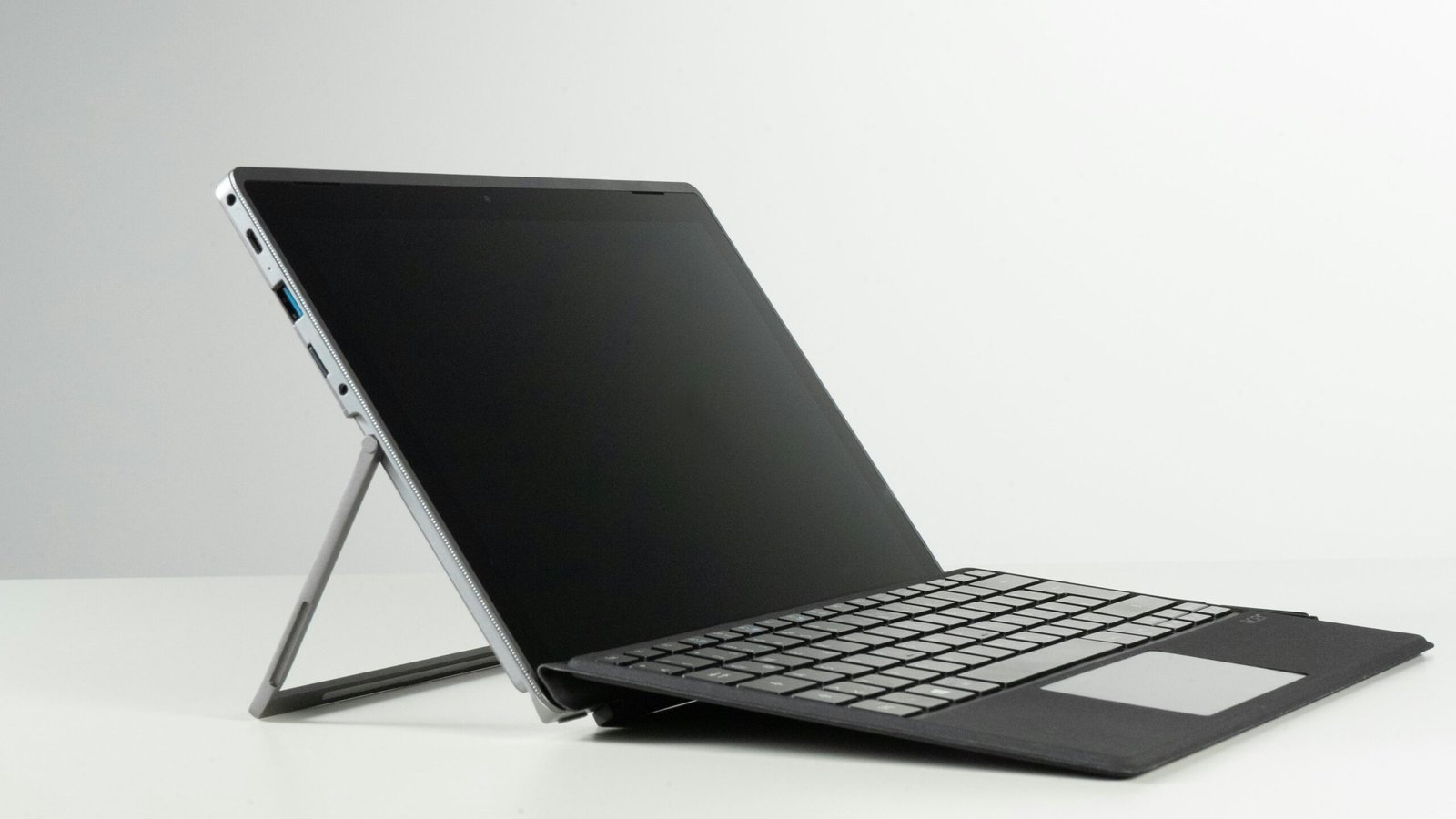Introduction to Intel’s New Processor
The introduction of Intel’s latest processor marks a significant milestone in the realm of computing and technology. Over the years, Intel has built a formidable reputation for innovation, consistently delivering cutting-edge solutions that redefine performance standards for desktop computers and personal systems alike. The new processor, which boasts advanced architecture and features, aims to enhance user experience and processing power across various applications.
In today’s fast-paced digital landscape, where demands for better performance and efficiency are constantly increasing, Intel’s new offering is generated as a substantial upgrade. With capabilities designed to support emerging technologies, including artificial intelligence and machine learning, this processor serves not just as a component of computer systems but as a catalyst for developments in numerous industries. From gaming to professional workloads, the implications of such advancements in Intel’s technology can be seen in improved operational capabilities for professionals and enthusiasts alike.
This launch emphasizes Intel’s commitment to maintaining its lead in the processor market, tackling challenges head-on while responding to evolving consumer needs. As we delve deeper into this blog post, we will explore the comprehensive features and specifications of this innovative processor. Additionally, we’ll examine how this latest release impacts both the consumer market and businesses, altering the traditional computing landscape. By understanding Intel’s approach and the technology integrated into this processor, users will be better prepared to leverage its full potential in their respective environments.
Key Features of the New Processor
The recent unveiling of Intel’s latest processor model introduces several standout features that promise to redefine the landscape of desktop computing. One of the most significant improvements comes from its architecture enhancements. The new architecture offers a more efficient design that boosts performance metrics while maintaining or reducing power consumption. This evolution in architecture results in quicker data processing and improved multitasking capabilities, which are critical for modern PC users who engage in multiple applications simultaneously.
Another notable feature is the increase in clock speed. The latest processor achieves higher clock speeds compared to its predecessors, enabling faster execution of tasks and applications. This boost in speed is particularly advantageous for gamers, content creators, and professionals relying on high-performance computing to ensure smooth and responsive experiences.
Core count has also seen a substantial upgrade, with the new processor featuring additional cores. This enhancement allows for better parallel processing, which means that multiple tasks can be executed concurrently without significant slowdown. For users of resource-intensive applications, the increased core count translates to more efficient video rendering, smoother gaming sessions, and quicker file compilation.
Energy efficiency is yet another critical aspect of Intel’s new offering. The latest processor has been designed to consume less power while still delivering impressive performance levels. This improvement not only contributes to lower electricity costs for consumers but also aligns with the growing demand for sustainable computing solutions. By optimizing power usage, Intel has responded to market demands for eco-friendly computing options, ensuring that the new processor not only excels in performance but also supports environmental considerations.
Overall, the combination of advanced architecture, increased clock speeds, enhanced core count, and superior energy efficiency makes Intel’s latest processor a transformative element for desktop computers that meets the evolving needs of users.
Performance Benchmarks and Comparisons
Intel’s latest processor has generated significant interest within the computing community, and benchmarks have begun to illustrate its impressive capabilities. Performance tests reveal a considerable enhancement over previous Intel models, as well as a distinct edge over competitor processors. These benchmarks cover a variety of scenarios, such as gaming, multitasking, and productivity applications, presenting a well-rounded view of its performance in practical use cases.
In gaming, Intel’s new processor demonstrates notable advancements in frame rates and game responsiveness, particularly in titles that are optimized for high-performance setups. Benchmarks indicate that this desktop computer chip can handle demanding graphics and complex processing tasks with ease, providing gamers a smooth experience even at the highest settings. Compared to its predecessors, the new Intel processor delivers a marked improvement in performance metrics, enabling higher resolutions and improved refresh rates without compromising on stability.
When assessing multitasking capabilities, the latest Intel processor excels in managing several applications simultaneously. Real-world testing scenarios reveal that users can run resource-intensive software while seamlessly switching between lighter applications. This is ultimately a testament to its advanced core architecture and enhanced thermal performance, which minimize throttling and ensure that the desktop computer maintains peak performance even during heavy use.
Productivity applications also benefit from the new Intel design, with impressive results recorded in benchmarks for software like spreadsheets, video editing, and graphic design tools. These enhancements not only enhance user experience but also emphasize the practicality of upgrading to this new processor for professionals seeking greater efficiency in their work. As the benchmarks clearly indicate, Intel’s latest processor holds a strong position in the market, showcasing its potential to be a game changer in the realm of computing.
Technological Advances Behind the Processor
The realm of desktop computing is continually evolving, and Intel has consistently been at the forefront of this progression. The latest processor introduced by the company showcases significant advancements that enhance its performance, setting new standards in the pc segment. A vital factor in this evolution is the refinement of semiconductor manufacturing processes. Intel has made significant strides with its 10nm SuperFin technology, which allows for smaller transistors that provide improved efficiency and speed. This reduction in transistor size not only improves power efficiency but also allows for higher performance levels essential for modern computing demands.
Moreover, the integration of artificial intelligence (AI) capabilities into the newest Intel processor has revolutionized how computers process information. AI features allow the desktop computer to anticipate user needs and optimize performance dynamically. This means that tasks such as gaming, 3D rendering, or machine learning workloads can be managed more efficiently, providing a smoother experience for users. With AI technology, Intel is not just enhancing individual tasks but is also paving the way for smarter, more responsive computing devices.
Furthermore, Intel’s proprietary technologies, such as Thunderbolt support and Intel Optane memory, further propel the capabilities of their latest processors. Thunderbolt technology enables faster data transfer rates between devices, while Intel Optane provides an innovative caching solution that enhances storage speed and efficiency. These integrations ensure that consumers using Intel desktop computers are receiving not only performance but also versatility. Collectively, these technological advances underscore why Intel remains a leader in the competitive landscape of computing. Through improved manufacturing techniques, AI integration, and unique proprietary offerings, Intel’s latest processor stands as a testament to the company’s commitment to innovation in desktop computing.
Target Audience and Use Cases
The latest Intel processor has been designed with a diverse range of users in mind, catering to both individual consumers and enterprise environments. One significant target audience includes gamers who demand high-speed performance and responsiveness from their desktop computers. The enhanced processing power of this Intel chip delivers smooth gameplay experiences and minimizes lag, allowing gamers to maximize their potential in competitive scenarios.
Content creators are another key demographic that stands to benefit from the capabilities of the new Intel processor. These individuals often rely on powerful desktop computers to handle intensive tasks such as video editing, graphic design, and 3D rendering. Intel’s latest offering enhances multi-threaded performance, enabling smoother workflows and reduced rendering times, making it an essential tool for professionals in the creative industries.
Moreover, the advancements in artificial intelligence (AI) are increasingly relevant to the use cases of this processor. AI developers can take advantage of the capabilities offered by the Intel architecture, enhancing machine learning applications and facilitating complex computations. This capability opens new doors for applications in data analysis, natural language processing, and deep learning tasks, making the Intel processor pivotal for innovative AI developments.
Additionally, enterprise solutions benefit from the robustness of Intel’s new processor. Businesses focusing on efficiency and reliability in their IT infrastructure will find this chip’s features advantageous for tasks such as virtualization, server management, and cloud computing. With support for advanced security features and the capacity to manage large workloads, the processor can effectively meet the demands of modern enterprises.
In summary, Intel’s latest processor appeals to a wide-ranging audience, including gamers, content creators, AI developers, and business professionals, demonstrating its versatility and potential market impact across various computing needs.
Impact on the Tech Industry
The introduction of Intel’s latest processor marks a pivotal moment in the technology sector, with significant implications for both competitors and the broader computing ecosystem. As one of the leading manufacturers in the computer industry, Intel’s innovations often set the pace for advancements in PC and desktop technology. Consequently, rival companies may be prompted to accelerate their own development schedules to keep up with Intel’s cutting-edge capabilities.
This competitive pressure can foster a more dynamic market environment, potentially leading to the rapid evolution of new hardware and software solutions. For instance, the improved performance metrics and energy efficiency associated with the new Intel processor may spur developers to create applications that maximize these enhancements. Software that leverages the processor’s capabilities can lead to more efficient multitasking, richer graphical experiences, and optimized cloud computing solutions, thereby improving overall user satisfaction.
Furthermore, Intel’s new technology aligns with current trends towards artificial intelligence, machine learning, and IoT (Internet of Things) integration. As the demand for smarter, more efficient computing rises, Intel’s advancements could serve as a catalyst for a new wave of tech innovations. This alignment with emergent technology topics positions Intel as a key player not just in the PC or desktop sectors, but across various domains including enterprise solutions and consumer electronics.
Additionally, education and training around the new Intel processor technology will likely become a priority within the tech industry. Both new and seasoned professionals in computer technology may seek to enhance their skills, favoring academic institutions and industry workshops that emphasize the practical application of this advanced computing power. Overall, Intel’s new processor is not only a testament to the company’s commitment to innovation, but it also plays a crucial role in shaping the trajectory of the tech industry as a whole.
Customer Reactions and Pre-orders
The recent unveiling of Intel’s latest processor has sparked considerable excitement among early adopters and technology enthusiasts. As pre-orders began, feedback from customers highlighted an overall sense of enthusiasm for the new features and performance enhancements that this desktop computer processor promises. Industry experts have noted a growing trend in customer anticipation, with many touting the processor’s potential to redefine computing experiences in modern PC setups.
Analyzing pre-order statistics reveals a positive reception, with quantities surpassing early expectations. Retail partners reported significant interest, indicating that consumers are eager to upgrade their existing systems. Many customers express excitement about how this processor can enhance multitasking capabilities and performance for resource-intensive applications. The new architecture and efficiency optimizations are particularly appealing to gamers and professionals who require robust computing power for demanding tasks.
Feedback from early testers highlights the seamless integration of the processor into various desktop configurations, ensuring compatibility with existing hardware. Users have reported a noticeable increase in processing speeds and enhanced thermal management, which is crucial for maintaining performance during prolonged usage. Furthermore, the processor’s innovative technology appears to align well with customer expectations of modern computing systems, making it a desirable addition to upcoming PC builds.
However, some early adopters have voiced concerns regarding pricing and availability. There is a contingent of customers who feel that while the processor delivers superior performance, it may be priced at a premium compared to previous generations. This sentiment reflects a common consideration in the tech community, where value for money often dictates purchasing decisions.
Overall, the initial reactions indicate that Intel’s latest processor is well-received, with high expectations for its impact on the desktop computer market. As the official launch date approaches, it will be intriguing to see how these sentiments evolve and the ultimate reception of this cutting-edge technology in the broader market.
Comparison with Previous Intel Processors
The release of Intel’s latest processor marks a significant milestone in the evolution of desktop computers. Compared to its predecessors, the new chip exhibits remarkable improvements in performance, efficiency, and processing capabilities. This is particularly evident when analyzing the advancements in multi-core architecture, which enables the processor to handle simultaneous tasks more effectively than earlier models. Consumers have increasingly demanded better performance, leading Intel to refine their technology continuously to meet these expectations.
Previous generations of Intel processors have been notable for their substantial capabilities; however, the latest release fulfills a growing need for enhanced speed and improved energy efficiency in personal computing. The latest model incorporates advanced manufacturing technology that allows for higher transistor density, resulting in faster data processing and reduced latency. Consequently, this new desktop processor outperforms its predecessors in benchmark tests and real-world applications alike, marking a significant leap forward for Intel’s lineup of processors.
Moreover, as cloud computing and AI workloads become more prevalent, the gap between the older Intel processors and the latest generation becomes increasingly evident. The new chip showcases features designed explicitly for optimized performance in demanding environments, such as enhanced thermal management and refined integrated graphics capabilities. These upgrades position Intel as a competitive player in the evolving landscape of desktop computing, which now requires processors that can support sophisticated applications and multitasking environments efficiently.
In conclusion, the advancements found in Intel’s latest processor illustrate the company’s commitment to pushing the boundaries of what is possible in desktop computer technology. By filling the technological gaps left by previous generations, Intel not only meets consumer demands for better performance but also sets new standards for future developments in the field.
Conclusion and Future Prospects
In conclusion, Intel has undeniably made significant strides in the field of processor technology with its latest release. The innovations showcased in this latest Intel desktop processor not only enhance computing performance but also support a diverse range of applications, effectively catering to both consumer and professional needs. This new line of processors has been designed with advanced architecture that promises to deliver superior speed and efficiency, addressing the increasing demands for high-performance computing solutions across various sectors.
Looking ahead, the future of Intel’s processor developments appears promising. As technology continues to evolve, Intel aims to stay at the forefront by introducing subsequent generations of processors. Anticipated advancements will likely focus on improving power efficiency, enhancing multimedia rendering capabilities, and integrating artificial intelligence functionalities to accommodate a growing array of computer applications. Such enhancements will not only elevate the performance of personal computers and workstations but are also expected to redefine the landscape of gaming, content creation, and data-centered tasks.
Furthermore, as consumer needs evolve, Intel’s commitment to integrating emerging technologies will play a crucial role in shaping the future of computing. With increasing reliance on cloud computing, machine learning, and gaming experiences, Intel’s desktop processors will be pivotal in ensuring that users have access to reliable and cutting-edge systems. By continuously adapting to market demands and focusing on innovation, Intel is poised to meet the challenges of tomorrow’s technology landscape. The company’s efforts will be instrumental in driving advancements that enhance user experience, ultimately solidifying Intel’s position as a leader in processor development.





